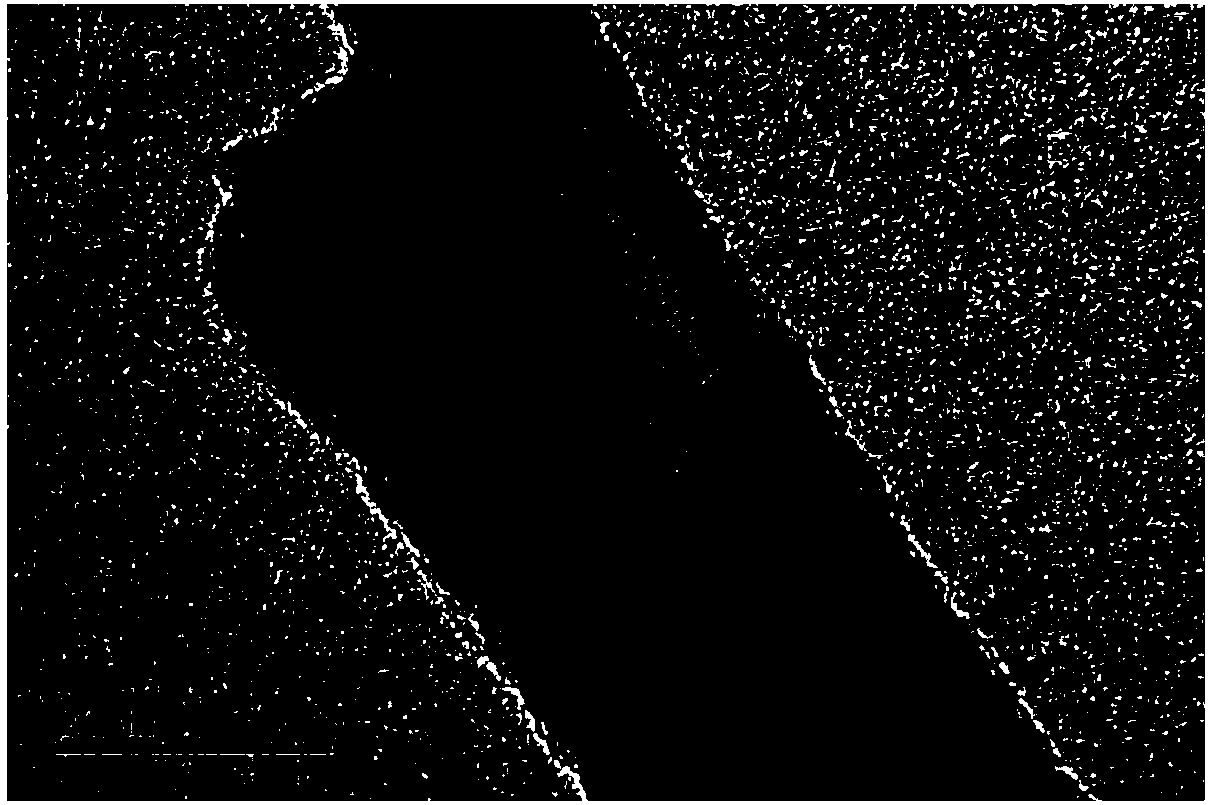Organic nitrogen and sulfur pesticide detection method
A detection method, organic nitrogen technology, applied in the field of pesticide detection, can solve the problem of rare sensor colorimetric cards, and achieve the effect of low cost, easy operation and good stability
- Summary
- Abstract
- Description
- Claims
- Application Information
AI Technical Summary
Problems solved by technology
Method used
Image
Examples
Embodiment 1
[0034] Weigh 91.09mg of cetyltrimethylammonium bromide and 170mg of copper chloride dihydrate into a reaction flask, add 8ml of deionized water, stir to dissolve, and slowly add 2ml of aqueous solution in which 9.5mg of sodium borohydride is dissolved while stirring , continue to stir the reaction after the dropwise addition. The stirring speed is 1000rpm, the reaction time is 2h, and the reaction temperature is 25°C. After the reaction was completed, the supernatant was removed by centrifugation, and the obtained solid was resuspended and washed with 8 ml of deionized water, and the precipitate was obtained by centrifugation at a speed of 6000 g for 20 minutes. Washing with water was repeated three times and then vacuum-dried to obtain a solid product of fluorescent copper nanosheets. The fluorescent copper nanosheet structure characterized by electron microscopy, such as figure 1 , it can be clearly observed that the product has a sheet-like structure. The obtained coppe...
Embodiment 2
[0039] Weigh 91.09mg of hexadecyltrimethylammonium bromide and 85mg of copper chloride dihydrate into the reaction flask, add 8ml of deionized water, stir to dissolve, slowly add 2ml of aqueous solution in which 9.5mg of sodium borohydride is dissolved while stirring , continue to stir the reaction after the dropwise addition. The stirring speed is 1000rpm, the reaction time is 2h, and the reaction temperature is 25°C. After the reaction was completed, the supernatant was removed by centrifugation, and the obtained solid was resuspended and washed with 8 ml of deionized water, and the precipitate was obtained by centrifugation at a speed of 6000 g for 20 minutes. Washing with water was repeated three times and then vacuum-dried to obtain a solid product of fluorescent copper nanosheets. The obtained copper nanosheets emit orange fluorescence under 254nm light excitation.
[0040] Design the required circular sample point and the size of the square outside the sample point th...
Embodiment 3
[0043] Weigh 364.3mg of cetyltrimethylammonium bromide and 42.5mg of copper chloride dihydrate in a reaction flask, add 8ml of deionized water, stir to dissolve, and slowly add 2ml of dissolved 9.5mg of sodium borohydride dropwise while stirring Aqueous solution, continue to stir the reaction after the dropwise addition. The stirring speed is 1000rpm, the reaction time is 2h, and the reaction temperature is 25°C. After the reaction was completed, the supernatant was removed by centrifugation, and the obtained solid was resuspended and washed with 8 ml of deionized water, and the precipitate was obtained by centrifugation at a speed of 6000 g for 20 minutes. Washing with water was repeated three times and then vacuum-dried to obtain a solid product of fluorescent copper nanosheets. The fluorescent copper nanosheet structure characterized by electron microscopy, such as Figure 7 , it can be clearly observed that the product has a sheet-like structure. The obtained copper nan...
PUM
 Login to View More
Login to View More Abstract
Description
Claims
Application Information
 Login to View More
Login to View More - R&D Engineer
- R&D Manager
- IP Professional
- Industry Leading Data Capabilities
- Powerful AI technology
- Patent DNA Extraction
Browse by: Latest US Patents, China's latest patents, Technical Efficacy Thesaurus, Application Domain, Technology Topic, Popular Technical Reports.
© 2024 PatSnap. All rights reserved.Legal|Privacy policy|Modern Slavery Act Transparency Statement|Sitemap|About US| Contact US: help@patsnap.com










